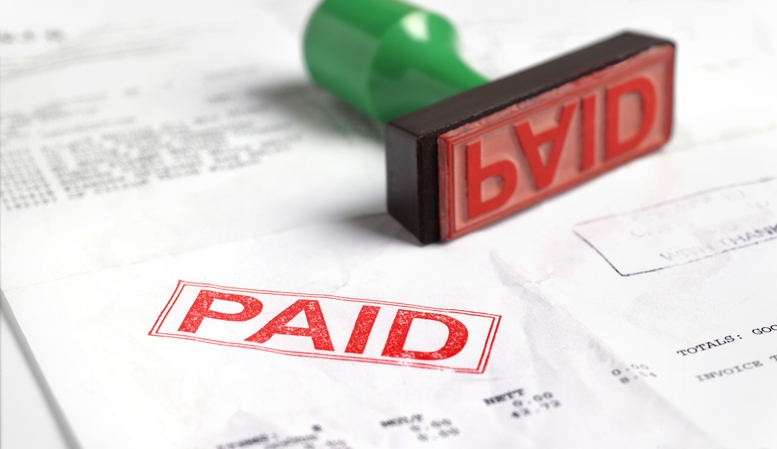If you’ve been involved in a motor vehicle accident, you can claim for all your physical, psychological and financial losses under the Compulsory Third Party (CTP) insurance. This applies across all of Australia.
Before you lodge a CTP claim, you need to evaluate your chances of getting the maximum compensation. For that, you need to understand the CTP claims process, what you can claim for and what will be used to assess your application.
A motor vehicle accident lawyer can guide you through the CTP claims process and navigate all the legalities.

Things to Assess Before Submitting a CTP Insurance Claim
Before you make the claim, take some time to gather and review the necessary documents and information that will support your application and understand how it will be assessed.
Income Documentation
To start claiming lost wages, you’ll need to provide proof of your income before the accident. This will allow the insurer to calculate your weekly payments for income loss. Typically, you will be asked to provide 12 months’ worth of pay slips and the insurer will calculate an average of your income over that period to determine your pre-accident income.
This method may not always be in your favour, especially if you have lower than usual income or gaps in your earnings. If you had periods of no income or lower wages, this could result in a lower average, which may affect the compensation amount.
The following table outlines the types of claims you can make.
| Time Since the Accident | Income Support payments |
|---|---|
| Weeks 1-13 | 95% of pre-accident earnings |
| Weeks 14-26 | 80-85% of pre-accident earnings |
| Beyond week 26 | If your injury occurred before April 1st, 2023, you could only continue receiving benefits beyond 26 weeks if you weren’t the driver primarily at fault or if your injuries have been assessed as above threshold. If your injury happened after April 1st, 2023, the timeframe for receiving benefits is extended to 52 weeks. |
2. Certificate of Capacity
Your certificate of capacity is an important document you’ll need from your GP to confirm your injuries. Once you’ve lodged your application for personal injury benefits, you must see your GP regularly and get a new certificate of capacity every 28 days or when the current one expires. This is crucial to ensure your benefits continue.
Make sure all your injuries are documented, including any new or psychological conditions you may develop. What might seem like a minor issue at first could become a more serious problem, so be thorough.
What you’ll need to lodge your personal injury benefits application:
- Your Medicare number and reference number
- Driver’s license number (if applicable)
- Bank account details (for direct deposit)
- Police event number
- “Certificate of fitness” from your GP
- Proof of income, such as pay slips
- Medical treatment evidence (if available)
- Information on any prior claims you’ve made
Once you’re clear on the CTP personal injury claim process and have the necessary medical assessments, you can proceed with lodging your application.
A Step-by-Step Guide To Lodging Your CTP Insurance Claim
Here’s how you can lodge your claim:
Step 1: Enter Your Personal Details
Ensure that you complete all sections of your personal details accurately, leaving no fields blank. Your Medicare number can be found on your Medicare card, and if multiple people are listed, your reference number is next to your name.
Step 2: Sign the Declaration
After filling in your personal details, carefully read through and sign the declaration.
Step 3: Describe the Accident and Injuries
Now, you have to provide details about the accident and injuries. Here is what it involves:
| Sections | What To Do |
|---|---|
| Police Event Number | You can obtain your police event number by calling 131 444 or visiting a local police station. If you don’t have the number at the time of submission, you can leave the field blank and provide it later. Include the insurer’s details for the vehicle that was mostly at fault. If you’re unsure of the insurer’s name, call 1300 656 919 and provide the vehicle’s registration number to obtain the information. |
| Accident Details | Be clear and concise when describing the accident. For example: “I was waiting at a traffic light to turn right when a truck rear-ended my vehicle.†Remember to include the location of the accident, such as the road name and suburb, and the time it occurred. |
| Injury Details | Provide as much detail as possible regarding your injuries, as your compensation depends on the severity. Start from the top of your head and work down, listing every injury, including pain, bruising, and scarring. If there isn’t enough room in the application, feel free to attach additional information. Make sure also to include any psychological injuries, such as anxiety or depression, that may have arisen due to the accident. |
If your injuries are classified as threshold (minor), you won’t be eligible to claim a lump sum for future lost wages or pain and suffering. Additionally, your benefits will be limited to six months (for injuries sustained before April 1st, 2023) or twelve months (for injuries sustained after April 1st, 2023).
Step 4: Attach Your Health Documents
The next section of the form focuses on your health, where you’ll need to attach any relevant invoices, receipts, medical reports, and other proof of treatment you’ve received. If you were hospitalised, be sure to include the hospital report, or if not, provide your GP’s certificate of capacity.
Before your GP appointment, make a thorough list of all your injuries, as outlined in step 3, to ensure nothing is overlooked. If necessary, your GP can add extra details to the certificate of capacity.
Step 5: Provide Treatment Details
Here, you’ll provide any hospital or ambulance details if applicable.
Step 6: Enter Your Employment and Income
In this step, you’ll input your employment and income information. The insurer will use this information to calculate your weekly benefits if you miss work. You’ll need to submit 12 months’ worth of pay slips, which the insurer will average over the year.
Also, remember to include your tax file number declaration to prevent a 48% tax rate from being applied.
Step 4: Attach Your Health Documents
The next section of the form focuses on your health, where you’ll need to attach any relevant invoices, receipts, medical reports, and other proof of treatment you’ve received. If you were hospitalised, be sure to include the hospital report, or if not, provide your GP’s certificate of capacity.
Before your GP appointment, make a thorough list of all your injuries, as outlined in step 3, to ensure nothing is overlooked. If necessary, your GP can add extra details to the certificate of capacity.
Step 5: Provide Treatment Details
Here, you’ll provide any hospital or ambulance details if applicable.
Step 6: Enter Your Employment and Income
In this step, you’ll input your employment and income information. The insurer will use this information to calculate your weekly benefits if you miss work. You’ll need to submit 12 months’ worth of pay slips, which the insurer will average over the year.
Also, remember to include your tax file number declaration to prevent a 48% tax rate from being applied.
Steps 7 & 8: Provide Employment and Employer Details
Here, you’ll provide information about your time off work due to the accident. If you’ve returned to work, list the total amount of time you missed.
If you’re still off work or anticipate further time off, make a note of it, such as: “Four weeks off work so far, expecting at least another four weeks off.” When detailing your earnings at the time of the accident, make sure to include any overtime, regular bonuses, or commissions.
Finally, read through the declaration at the bottom and sign it.
When To Seek Help from a Lawyer
While you can submit your personal injury benefits application on your own, if you’re looking to make a separate lump sum (common law) claim, you will need legal assistance.
You may handle the claim yourself if you only have threshold (minor) injuries. However, the process is more complex for above-threshold injuries, and you will need to apply for lump sum benefits separately.
The likelihood of missing out on benefits is higher with above-threshold injuries, so it’s advisable to seek free advice from a specialist CTP lawyer before filing your claim to ensure you receive everything you’re entitled to.
Contact Wyatts experienced team of CTP claim lawyers now to get started!







